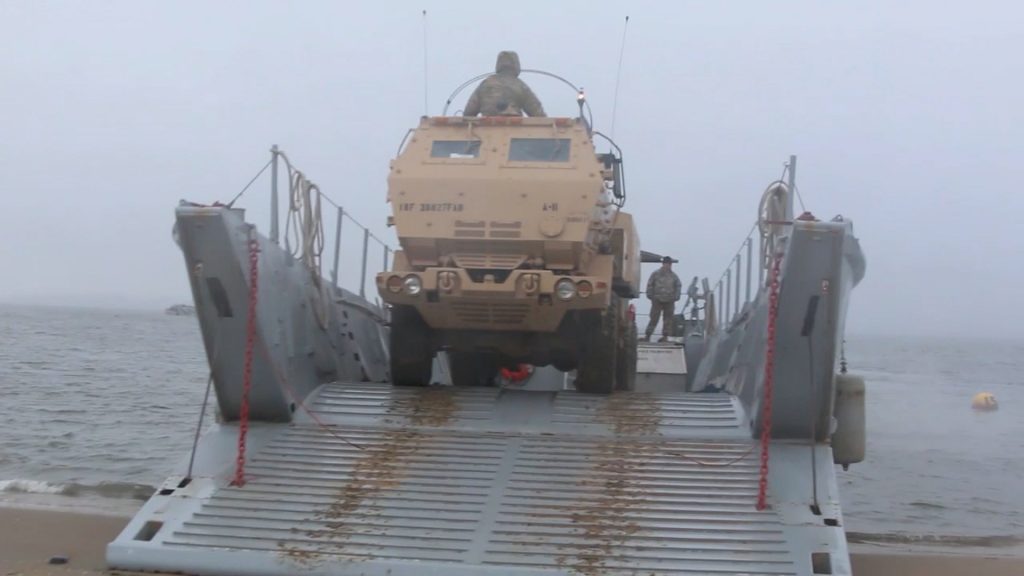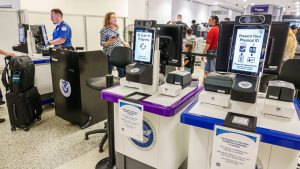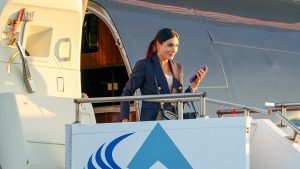Army watercraft fleet gains strategic importance amid Pacific tensions

The U.S. Army’s fleet of watercraft is playing an increasingly vital role as military planners shift focus toward potential conflict in the Indo-Pacific region. While tanks and helicopters often dominate the public image of the Army, its vessels are proving essential for transporting troops, equipment and supplies across oceans, coastal waters, rivers and inland waterways.
Army seeking innovation
At the AUSA Global Force Symposium in Alabama, Col. William Arnold, chief of transportation for the U.S. Army Transportation Corps, emphasized the strategic value of the fleet.
“I liken it to having a bunch of different tools in the toolbox,” Arnold said. “Watercraft will be a connector of many modes — sea, air and ground lines of communication.”
Arnold acknowledged that while the fleet is aging, it remains mission-capable, and could integrate with emerging technologies. He highlighted the Army’s interest in autonomous systems and artificial intelligence to improve operations, such as littoral mapping without deploying mariners into hazardous waters.
“We are looking for capabilities that can do that rapidly,” Arnold said. “AI could feed decisions back to mariners before we commit any vessel to a beach.”
What the Army operates today
According to the Government Accountability Office (GAO), the Army currently operates:
- 8 logistics support vessels.
- 17 landing craft utility (LCU) vessels.
- 9 landing craft mechanized (LCM) vessels.
- 6 small tugs.
- 30 modular causeway systems.
The Army plans to acquire 13 new maneuver support vessels by 2036. Arnold described the new vessels as a “capability that can maneuver forces rapidly in and around littoral areas.”
Autonomous vessels and budget constraints
Brig. Gen. Shane Upton, director of the Contested Logistics Cross-Functional Team at Army Futures Command, said the Army is exploring autonomous boats to support its expanding mission set amid tightening budgets.
“We are going to put autonomous boats in the water,” Upton said. “Soldiers will learn collaborative behaviors and command and control them in forward theaters.”
Chief Warrant Officer 5 Nicholas Laferte of the Combined Arms Support Command advocated for incremental autonomy to ease the burden on warfighters.
“We are open to tiers of autonomy,” Laferte said. “Let their focused energy be on the threat at hand.”
Maintenance challenges and solutions
Maintenance remains a challenge. The GAO reported the fleet’s “fully mission capable” rate dropped from 75% in 2020 to below 40% in 2024. Maj. Gen. Michael Lalor, commander of the Army’s Tank-Automotive and Armaments Command, supported expanding 3D printing in the field to address the issue.
“No two watercraft are the same,” Lalor said. “They are snowflakes. Advanced manufacturing could solve problems with nonstandard parts.”
Lalor also said that the Army plans to expand contracted maintenance to new locations, including Guam, Singapore, the Philippines and Australia.
“I have been to most of them in the last six months trying to drum up some business,” Lalor said. “And business will be good.”
Leased vessels and future readiness
In March, then-Deputy Chief of Staff for U.S. Army Pacific Maj. Gen. Jeffrey VanAntwerp told Stars and Stripes that leased vessels offer “a pretty phenomenal capability and a pretty high level of readiness.” However, the Army has not confirmed how many vessels, if any, have been leased.
As the Army continues to reshape its force for future challenges, its watercraft fleet stands poised to play a critical role in projecting power across the Pacific.
Access the full Weapons and Warfare episode here.
Access all Weapons and Warfare podcast episodes here.





